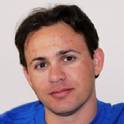Natural caudal spine replacement rates, population size and site fidelity of round stingrays, Urobatis halleri (Cooper), at Seal Beach, California were determined to evaluate the efficacy of clipping of caudal spines of stingrays to reduce injury to human beachgoers. Of the 2,183 stingrays caught, clipped, tagged, and released at Seal Beach, only 13 (0.06%) were recaptured over a three-year period, indicating a large, mobile population. Natural spine replacement occurred between August–October, when a majority of rays were found with two spines. Monthly catch rates of rays were variable, but positively correlated with the number of injuries reported by beachgoers. There was no significant reduction in stingray-related injuries to beach goers at Seal Beach over the period when stingray caudal spine clipping was conducted.
Available at: http://works.bepress.com/jeremy-vaudo/26/

©Southern California Academy of Sciences, 2007